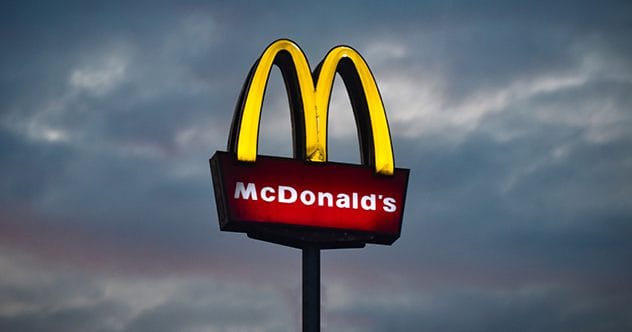If you plan to be a globe-trotter, you’ll quickly learn that while people share similar needs and desires, they’ve come up with different ways to meet them. We often take everyday things for granted. However, stepping outside your comfort zone and diving into another culture can reveal some truly unique differences. Some might seem strange, but mostly, it’s a lot of fun. Here are 10 things that are common in the U.S. but may seem odd to people from other countries.
10 Pharmaceutical Advertising
Ever watched TV in Europe? Besides the language, you might notice a different ad format. Instead of constant interruptions, they often have hour-long ad blocks. Also, you might not see commercials for cars or pharmaceuticals. In most countries outside the U.S. and New Zealand, it’s illegal for drug companies to market directly to consumers, including TV ads.
It can be refreshing not to hear about all the possible side effects from medications trying to prevent hair loss, manage depression, or treat other conditions. The side effects often sound worse than the original issue, involving possible death or cancer. It’s bizarre when you think about it and makes you wonder why it’s legal anywhere. Marketing only to doctors and medical professionals would be more sensible.
9 Garbage Disposal
That handy gadget in your kitchen sink, grinding up vegetable scraps and fruit waste (and fingers, if you’re not careful), isn’t as eco-friendly as you might think. It strains older sewage systems, which can easily clog with fibrous waste. Many people also put things down there that shouldn’t go, like coffee grounds or eggshells, leading to pipe clogs. All that water is recycled through treatment plants, but they can only remove so much. It’s not a perfect purification system!
An Australian study found that sending food down the disposal is potentially three times worse than sending it to a landfill. Garbage disposals are banned in many European countries, and even New York City has debated whether to continue allowing them.
8 Shady Product Price Labels
We all know the drill: the price at the checkout is higher than what we calculated while shopping. Taxes and surprise charges are coming! Most of us don’t want to do the math or even know the percentage, so we hand over our card or cash with a sigh when those extra dollars get added on.
But there’s a better way! In the EU, there are no surprises. Price tags must include all charges, including tax, on the product or shelf. How refreshing! Sellers also can’t charge extra for using a credit or debit card. Maybe it’s time for the U.S. to adopt some of these practices.
7 Super-sized Food Portions
How often do you order the larger size at a drive-thru, especially at a fast-food restaurant? Probably at least once. French fries are amazing, and it’s hard to resist searching the bottom of the bag for those extra fries. It’s part of the culture and the joy of fries!
According to many Europeans, though, it’s a weird part of our culture. Portion sizes in other countries are typically smaller than our regular sizes, so supersizing anything seems crazy. It’s no wonder obesity is on the rise with such massive meal sizes. If freedom means doing anything you want, you have to accept the consequences.
6 “How Are You?” as a ‘Hello’ Greeting
Guilty! “How are you?” often replaces “Hello” in the U.S. You likely hear it and say it several times a day, especially when you make eye contact with a stranger. The reply is usually identical, and an actual answer isn’t expected. It would be surprising if you got one.
Elsewhere, like in Europe, you’d likely receive a full monologue about someone’s day and they would expect a similar reply from you. If they didn’t get it, they might think you rude. When traveling to Europe, remember to use just “hello” unless you want a lot of unexpected conversations!
5 Free Drink Refills
How many sodas do you drink with one meal? You pay for one and can drink as many as you want. Many of us drink at least two, if not more. They offer, so why refuse? We probably already said yes to the super-sized meal, so we might as well go all in!
This is another common practice in the U.S. that you won’t find in many other places. In most countries, especially in Europe, you pay for everything you drink, so don’t be surprised when the final bill shows those six colas you had. They’re also baffled by the amount of ice we put in our drinks.
4 Red Solo Cups
The iconic red Solo cup even has a song about it in the U.S.! Toby Keith’s “Red Solo Cup” has over 61 million views, showing just how popular these cups are. They’re easy to stock, disposable, and we all likely have a stack ready to go in our kitchen or pantry.
However, the fame of these cups stays within the U.S. borders. You probably won’t find them outside the States. This might be because it’s less common to need to hide a drink in public, since many countries have more relaxed alcohol laws.
3 Tipping
The amount we tip in the U.S., or even the fact that we tip at all, is mind-blowing to most foreigners. The idea that an employee’s salary comes directly from customers makes no sense to many travelers. And what if the service is bad or rude? You’re still expected to leave something. We’re very used to just paying up!
In Europe, the service fee is included in the meal price. In Japan and South Korea, tips are seen as insults. So, when visiting the U.S., the expectation of a tip can be an expensive surprise.
Ever traveled and had someone look confused and return your money after you tried to tip them? Experience has taught not to tip taxi drivers in some parts of Central America. It’s a good idea to research tipping customs at your destination so you don’t offend anyone.
2 To-Go Coffee
What would we do without our to-go coffees when rushing to work or taking an afternoon break? Starbucks and Dunkin’ Donuts wouldn’t be such a big thing without the black gold we can grab from our car windows. If anything unites this nation, it’s our love for convenience. We want it now and exactly how we ask for it. Nothing represents that cultural attitude better than our coffee on the run.
But it’s opposite in so many other places where coffee is a leisure activity, meant to be savored from a ceramic cup (not plastic or styrofoam) during a conversation with a friend or while sitting alone and enjoying a euphoric concerto. In Italy, the birthplace of espresso, coffee is a ritual done quickly and in the place of service, not an on-the-run event with no meaning beyond an energy kick. Psst, get a French press and make it at home…you’ll never buy to-go again! It’s as quick as making tea, much tastier than an automatic drip machine, and you can tweak it how you want.
1 Having Huge Gaps Under Stalls in Public Bathrooms
“They can see you!” Most of us have likely thought this at one time. It’s safe to say no one enjoys using a public restroom. If you’re a woman at an event, you’ll probably be standing in a long line before you can even get to the toilet. It’s an unfortunate necessity sometimes. But when you gotta go, you gotta go!
Those significant gaps between the door and the walls and the door and the floor don’t make the situation any better. You can see people shuffling outside on their way to another stall and clearly see your neighbor’s legs and feet in this vulnerable moment. It doesn’t create an atmosphere of comfort.
In Europe, if you need a public restroom, you’re fully enclosed and out of public view! The partitions go all the way to the floor, and there are no unsightly gaps. But expect to pay a small fee to use these restrooms. And no, it’s not a privacy tax, it’s for maintenance, which is fair. Maybe American restrooms would be cleaner with a fee?! You might also encounter a bidet (also in Japan) instead of toilet paper. It is a preferred method of cleaning in different places and cuts down on waste. Plus, you’re expected to throw used toilet paper in the waste bin in many places instead of flushing it.










